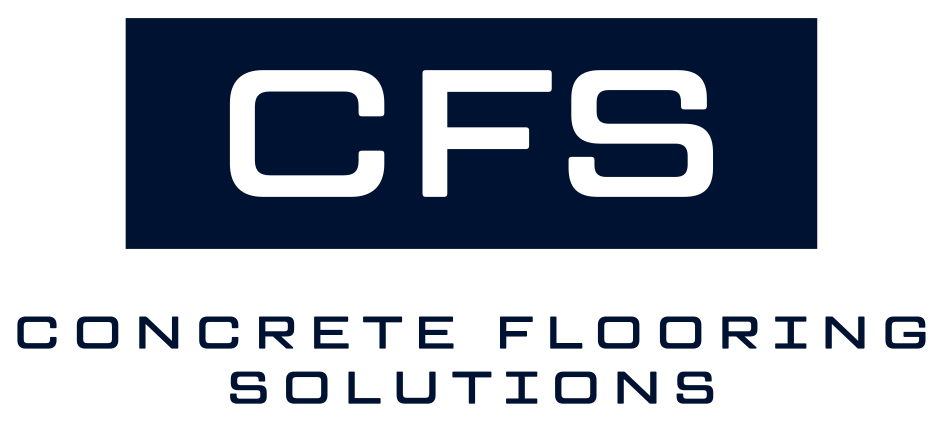What Are The Steps For Installing Epoxy Flooring?
Epoxy offers an effective way to transform dull concrete floors into beautiful and durable surfaces. A sleek and long-lasting solution, epoxy flooring is resistant to stains and damage and is incredibly easy to clean. It’s perfect for a wide range of residential and commercial floors, including garage floors, basement floors, warehouse floors, and office floors, as well as pool decks, driveways, patios, and more. Read on to learn the process for achieving a high-quality epoxy floor and what to consider before taking a do-it-yourself approach.
What is Epoxy Flooring?

Epoxy flooring features a concrete slab that has been covered with epoxy resin. As the resin dries, it goes through a chemical reaction that binds it to the concrete below, creating a strong surface. Unlike paint, epoxy doesn’t scratch or peel, so it looks great for a long time. It also protects the concrete floor from moisture, water leaks, and chemicals. Additionally, resin withstands high amounts of foot traffic, heavy vehicles, and other challenges in commercial and residential properties. Epoxy flooring is available in a wide range of colors and styles, so homeowners and companies can choose what looks best for their houses and businesses.
What about epoxy paint? This type of paint offers more durability than traditional paint, but it’s not quite as strong as actual epoxy resin. While epoxy paint protects against chemical spills and stains better than regular paint can, epoxy coating is the better solution for floors. This is especially true when durability is a top priority for your garage floor or other floor.
Types of Epoxy Floor Coatings
There are multiple types of epoxy flooring to choose from, including solid color, vinyl flake, and marble. Solid color epoxy floors are created with layers of pigment in your choice of color. Epoxy flake flooring incorporates colorful vinyl flakes to create a terrazzo-like appearance. The flakes come in a variety of colors and sizes and can be scattered across the floor in light coverage or full coverage. This style of epoxy flooring allows for plenty of customization to create a one-of-a-kind floor for the garage, basement, or other space.
Marble epoxy floors are made with clear resin and metallic additives, which create a sleek and elegant floor that resembles real marble. No two floors are the exact same thanks to the variety of colors and patterns available, so you can enjoy having unique flooring in your space. Installing this style of floor is a great way to elevate the look of your residential, commercial, or industrial property.
Where Can Epoxy Coating Be Installed?

Epoxy floor coatings are perfect for a variety of spaces, especially those that experiences lots of foot traffic and heavy machines or vehicles.
- Garage floors: Whether your garage is for residential or commercial use, epoxy resin is a smart flooring option. Resin withstands the weight of heavy vehicles and equipment as well as frequent foot traffic, ensuring your garage floor looks great even after a busy day. The ability to add stylish designs like vinyl flakes or marbling allows you to add a personalized touch to your floor.
- Basement floors: Epoxy is perfect for basements, which can be humid spaces. The epoxy coating serves as a waterproof layer, protecting the underlying concrete from moisture and water leaks. Whether your basement is used as a living space or storage space, epoxy flooring can enhance its appearance.
- Warehouse floors: Warehouse floors must stand up to foot traffic as well as heavy equipment, machinery, and the accidental dropping of tools. Epoxy creates a strong surface that resists scratches, chips, cracks, chemical spills, and more, to ensure the floor remains in great condition.
- Office floors: Epoxy flooring is ideal for offices because it withstands foot traffic, heavy desks, large printers, and other office equipment. It also allows you to customize the appearance of the floor, so you can choose a flooring solution that fits your office’s interior design and creates a welcoming environment for employees and guests.
Home Flooring Solutions
Epoxy flooring is a perfect addition to your home. It’s strong, difficult to accidentally damage, and easy to clean. A versatile flooring option, floor epoxy allows you to customize your flooring to achieve the appearance of marble, terrazzo, and more in the colors of your choosing. Resin is a smart option for the garage, basement, driveway, pool deck, patio, and more.
Commercial and Industrial Flooring Solutions

From retail stores to warehouses and more, epoxy is a great flooring option for commercial and industrial spaces. Epoxy is resistant to abrasions, chemicals, impacts, and more, so it stays looking nice even when you’re tough on it. With a wide range of colors and styles to choose from, you can select an epoxy coating that enhances the look and feel of your property. Epoxy is ideal for storefronts, offices, warehouses, schools, restaurants, commercial garage floors, and more.
Benefits of Installing Epoxy Floors
There are plenty of great reasons to choose epoxy resin for your concrete flooring solution. Resin is popular for its durability, visual appeal, and low maintenance. What are your priorities when choosing flooring for your home or business? Epoxy coating is likely to achieve your goals.
Durable
Epoxy’s durability makes it an excellent choice for a variety of applications, including basement, driveway, and garage floor coating. As we’ve mentioned, epoxy stands up to heavy foot traffic, vehicle traffic, heavy machinery, furniture, harsh chemicals, and more. Unlike paint, epoxy isn’t very susceptible to scratches, cracks, chipping, or peeling, so you can expect your floor to stay in great condition. Epoxy also blocks water from coming up through the garage or basement floor, helping prevent water damage, musty smells, and the growth of mold and mildew.
When properly cared for, epoxy floors typically last 10 to 20 years in residential spaces or low-traffic areas and 2 to 3 years in commercial spaces or high-traffic areas. Proper installation is also crucial to a long-lasting epoxy floor.
Looks Great
Epoxy offers a beautiful surface that you can customize to fit your design style and the aesthetics of your property. Choose from a variety of color combinations as well as styles like epoxy flake, marble, solid color, and more. Epoxy floor coating is also available in glossy, satin, and matte finishes, so you can select the floor’s level of shine.
Easy to Maintain
Epoxy flooring doesn’t require much upkeep. Typically, you can use a broom or vacuum to get rid of dirt, dust, and other debris that has fallen on the floor. To wash an epoxy floor, simply use a mop and warm water – you don’t even need soap in most cases. For deeper cleaning, you can use warm water and a mild soap.
Understanding the Epoxy Floor Installation Process

Interested in installing your own epoxy floor? The process involves multiple steps and requires knowledge as well as patience. While we recommend hiring professionals to perform floor installation for you, you can attempt it yourself following the process below.
Prep the Workspace
Step one: Prepare the workspace by clearing the concrete floor. This gives you more room to comfortably move around without bumping into anything or knocking something over. Relocate any objects that are on the floor, including furniture, equipment, storage bins, and more. It’s also helpful to move any items that may get in the way while you work and make the task more difficult. And, of course, make sure you have all the supplies you will need to complete the project.
Fix Minor Damage
Step two: Repair the floor. Identify any cracks, dents, and holes in the floor and fill them in. For smaller damage, patcher paste should do the trick. For larger cracks and damage, try cement mortar. Filling in damaged areas helps prevent the flaws from being visible once you pour the epoxy. If the concrete damage is severe or the floor is crumbling, it will need more extensive repairs or to be replaced before receiving a concrete coating.
Prep the Surface
Step three: Once the floor is clear, you will need to give the surface of the concrete a rough texture. This will help the epoxy adhere to it. There are several methods you can choose from, including sanding, milling, or grinding the floor. Alternatively, you can use an acid etching product, which is typically made with hydrochloric acid or phosphoric acid. The acid eats through the surface of the concrete to make the top layer rough. If you choose this method, be careful not to overdo it.
Clean the Floor
Step four: Clean the floor to ensure you don’t accidentally trap dirt or dust when you pour the epoxy, which could prevent the epoxy from adhering to the floor properly. Use a broom or vacuum to remove loose debris. You can also try using a wet-dry vacuum; just be sure to rinse the floor when you’re done and let it dry.
Apply a Primer Coating
Step five: Apply an epoxy primer to the surface of the floor. Primer will help the additional layers of epoxy bond with the concrete and help the epoxy flooring last longer. Applying primer also helps prevent bubbles from forming in the resin, making the finished product look as good as possible.
Mix The Epoxy
Step six: To create the epoxy resin, you’ll mix together epoxy and hardener. Simply follow the instructions on the product packaging. A chemical reaction will occur between the two components to prepare the resin to be applied to the floor.
Apply the Epoxy
Step seven: Apply the first coat of epoxy to the floor’s surface using a brush or roller. Working in one five-foot section at a time, start with the resin at the wall and move outwards. You will have a limited amount of time to apply the epoxy, so work quickly but carefully. Try to apply the coating on a dry day with no rain, as water can increase humidity and make the coating take longer to dry. Allow the coat to dry for several hours before applying a second coat of epoxy to the surface.
Add Decorative Elements, If Desired
Step eight: Create your design. If you’re using vinyl flakes, sprinkle them across the floor while the epoxy is still wet. Try to distribute them evenly for the best results. Allow the epoxy to dry before applying a topcoat.
Mix the Topcoat and Apply
Step nine: Mix the topcoat and apply it to the floor. This top layer serves as a protective barrier that keeps the floor safe from stains and damage. When you’re done, allow the topcoat to dry.
DIY vs Hiring Professionals
Applying epoxy flooring is a lengthy process. You can do it yourself, but this takes a lot of time and patience. You also want to feel confident that the epoxy’s being installed correctly and will look great when it’s dry. We recommend hiring a professional flooring company to install the epoxy floor for you. This is especially important if the concrete has large cracks or significant damage. A professional can tell whether the floor is in good enough condition to have epoxy added to the surface, or if it needs major repairs before attempting the epoxy process.
Professionals also have the knowledge and experience to perform high-quality work and achieve exceptional results. They’re familiar with the best practices and can ensure your epoxy floor is installed correctly. Additionally, hiring a professional saves you time and energy so you can focus on other tasks.
Contact Concrete Flooring Solutions
Ready to start your epoxy flooring project? Contact Concrete Flooring Solutions. Whether you’re updating your garage floor, basement floor, driveway, or other concrete surface, our team will make it look amazing. We have years of experience working with epoxy, primer, and concrete as well as creating gorgeous designs using epoxy flake, marble, staining, and other techniques. Let’s create the concrete floor you’ve been dreaming about. Contact us today for a free estimate.
